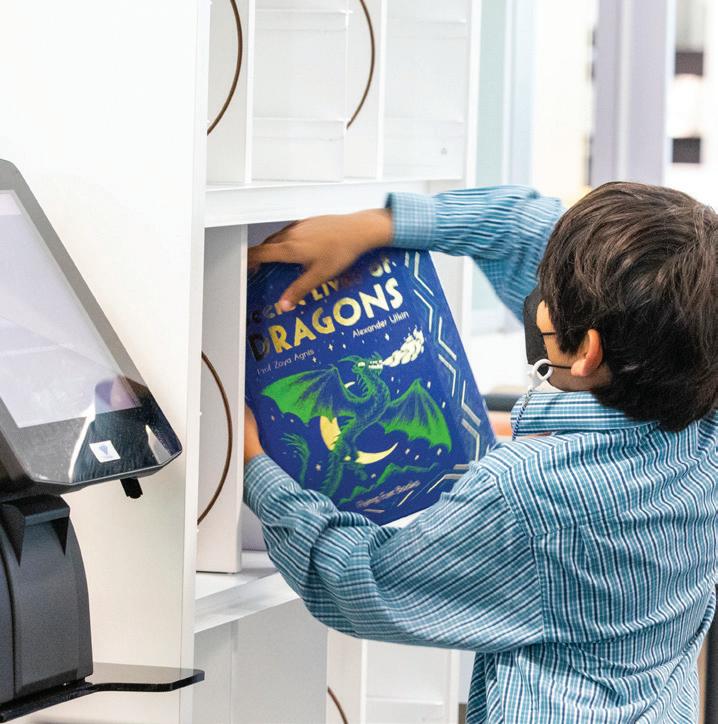
2 minute read
Innovative Technology in the Library
LIBRARY UPDATE
Innovative Technology in the Library
The Kristin School Library has a collection of over 35,000 print items. One of the primary roles of our Librarians is to identify and provide specific targeted resources and instruction to support literacy, student wellbeing and the PYP, MYP, IB Diploma and NCEA programmes; however, a considerable amount of staff time is taken up with the circulation and return of books.
Prior to the COVID-19 situation in 2020, we issued more than 40,000 items annually (approximately 1,125 items per week or 224 items per day). These items are effectively ‘double-handled’ if they’re returned to the Library, so up to 500 items might be processed by Library staff in a day.
Budget approval was granted for a project in 2021 to update the Library circulation system from one utilising scannable barcodes to a Radio Frequency Identification (RFID) system.
After a rigorous evaluation process FE Technologies from Melbourne was selected as our partner. Luckily the tags and basic RFID equipment were supplied well before the August lockdown. During Terms 3 and 4 of 2021 while the Library was closed, Library staff added RFID tags to over 30,000 books. From the moment the system went live we noted an improvement in the speed and ease of issuing and returning books.
In Term 2 of 2022 this project was completed with the installation of a self-issue kiosk for students to use with their ID cards and an auto-returns shelf. As students from upper Primary through to Senior School independently check-out their books at the kiosk, this frees Librarians to spend more time with students helping them as they choose their books. As books are placed on the auto-returns shelf, the loans are cancelled simultaneously in the Library account. With the completion of the Library RFID project, we are adding RFID tags to the 2,500 textbooks, novels and plays that are issued to students throughout the year. This will streamline the return of textbooks at year-end. The final piece of equipment that will support this process is an almost magic scanning ‘wand’ that can read the tags in books and textbooks as they are swept along the shelves. The wand detects any book with a tag that hasn’t been marked as returned and can update the student Library record via a mobile tablet that communicates with the Library system.
This investment in innovative Library management technology will make a significant impact on the services provided by our Library team. I would like to thank the Board and the Executive Leadership Team for their support of this project, which has fulfilled its promise of significantly reducing the time Librarians spend handling books, meaning more time to support teaching and learning across our three schools.
Alison Hewett
HEAD OF LIBRARY SERVICES

RADIO-FREQUENCY IDENTIFICATION (RFID) USES A WIRELESS RADIO SYSTEM TO TRANSFER DATA FROM A TAG ATTACHED TO AN OBJECT, SUCH AS A BOOK, SO YOU CAN IDENTIFY IT AND TRACK ITS USE. THE TAG CONTAINS ELECTRONICALLY STORED INFORMATION ON A MICROCHIP WHICH IS READ BY AN RFID READER OR SCANNER. RFID TAGS REPLACE LIBRARY BAR CODES. MULTIPLE RFID TAGS CAN BE READ AT A TIME, UNLIKE BARCODES WHICH CAN ONLY BE READ ONE AT A TIME.” (RADIO-FREQUENCY IDENTIFICATION, N.D.).
Reference
Radio-frequency identification (RFID). (n.d.). National Library of New Zealand Services to Schools. Retrieved 15 May 2022, from https://natlib.govt.nz/schools/school-libraries/librarysystems-and-operations/library-operations/radio-frequencyidentification-rfid










